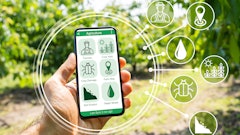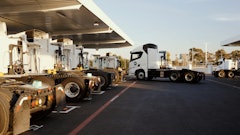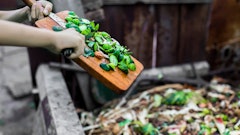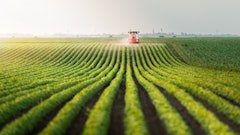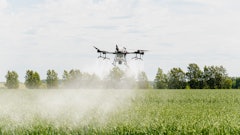
Asia is beginning to flex its massive consumer chops. By 2030, it will contain two-thirds of the global middle class, accounting for 59 percent of all middle-class consumption.
This creates a complex challenge. As populations grow and incomes rise, Asian households are moving away from packaged and frozen products, and demanding more fresh fruit, vegetables, fresh meat and dairy. The question is: how can the demand for fresh food be met in a sustainable way?
Currently, the infrastructure to store and transport chilled products, as well as other essential logistical services in the region, are not ready for the growing demand for fresh food. In Thailand for example, shrimp are transported for hours in containers filled with ice, which quickly melts during the first half of the journey; shrimp arrive warm, bloated and mushy at their destination.
Meanwhile, food system emissions are estimated to account for over 25 percent of all human greenhouse gas emissions, and Asia is a hotspot, contributing 55 percent of the total amount. The majority of these emissions are due to the production of food that is never consumed. Environmentally unsustainable transport and storage practices also form a significant factor, contributing directly to emissions and also indirectly to food loss. In South and Southeast Asia, pre-consumer food losses account for more than 90 percent of total food wastage.
Over two billion people in Asia rely on agriculture for their livelihoods, making them vulnerable to climate change impacts resulting from these greenhouse gas emissions. Therefore, it’s critical that we meet growing demand for fresh food in Asia by improving the cold chain infrastructure in a sustainable way, in order to cut down on overall food system emissions.
Another reason why we need to reduce food loss is the looming threat of food insecurity. Currently, 490 million people in Asia go hungry every night. Imagine what a difference cutting down food losses could make in bringing down hunger and malnutrition. Additionally, improved cold chain infrastructure brings down the cost of healthy fresh fruits and vegetables, making them more accessible for low-income consumers—thus improving their nutritional health.
Building a better, less wasteful food system also improves profit margins. Improved transport and storage conditions increase the quality, shelf life, safety, and ultimately the retail value of products.
If the benefits are so clear, why aren’t all companies already building more efficient food chains? The answer is that it’s hard to pin down responsibility. As opposed to food waste, supply chain food losses often go unnoticed, are very complicated to measure, and vary by product, region and supply chain. Vegetables and fruit, for example, are produced by smallholder farmers in complex supply chains involving a large number of actors, many of whom lack trust in each other. It’s difficult to pinpoint any one cause of food loss because the likelihood is that many different parties are responsible.
The secret lies in a strong, long-term, trusting relationship between retailers and logistics service providers. While the onus lies with food retailers to demand and pay for more efficient food supply chains, they often focus on reducing highly-visible retail and consumer food waste and are generally unaware of how much food is lost before it reaches their establishments. On the other hand, food logistics service providers confront this problem every day and are well poised to address it, but they need their buyers to prioritize it and be willing to invest in solutions to reduce losses.
To try and bring the right stakeholders together and foster mutual trust, Forum for the Future has created the Food Loss Consortium. It is a platform—and more than that, an opportunity—for businesses to form partnerships with like-minded, committed companies across the supply chain, get to know the innovators that are disrupting food logistics, and participate in pilot projects that test industry-transforming investments.
Some companies are already starting to find innovative solutions. OpenTaste, a new online food retailer, sells fresh produce through an online platform. By shipping directly to customers in Singapore from farms in California, it reduces losses, and could be more cost-effective for consumers. Another exciting firm is EcoHub, which provides tools that allow buyers to quickly and easily estimate the future shelf life of fish before purchase, so that fishermen who maintain the freshness of their fish by using an effective cold chain can command a higher price.
Fries is a Senior Sustainability Advisor at Forum for the Future (www.forumforthefuture.org), a global non-profit that helps businesses strategize for success in a resource scarce, low-carbon future and transform their industries through collaboration. She is an expert on agricultural trade and logistics, and passionate about building a sustainable food system that adequately nourishes our growing population.









